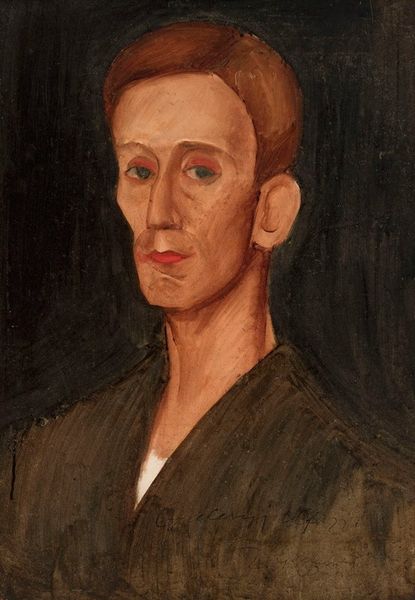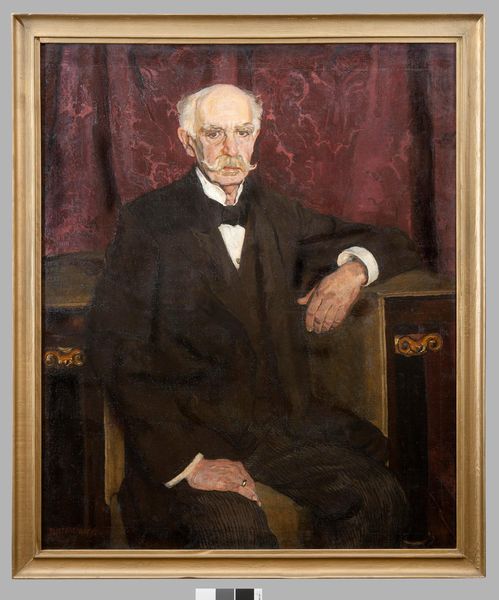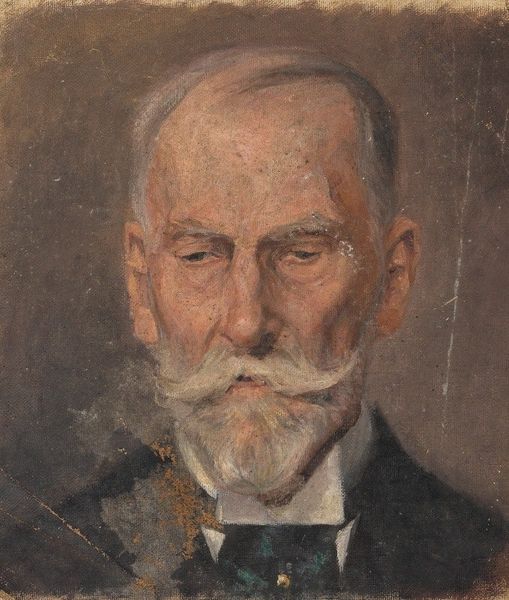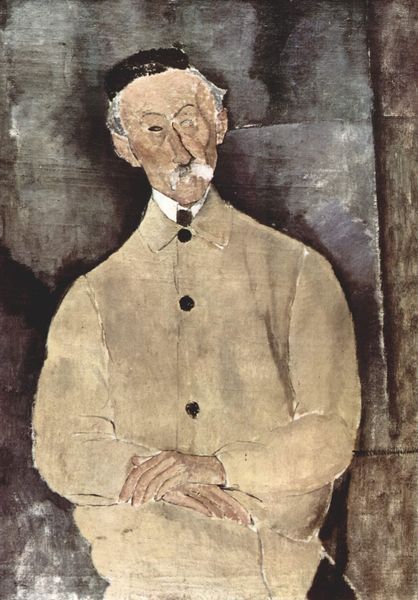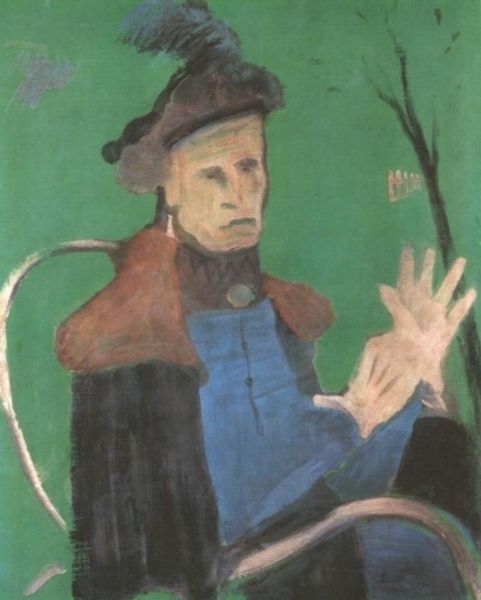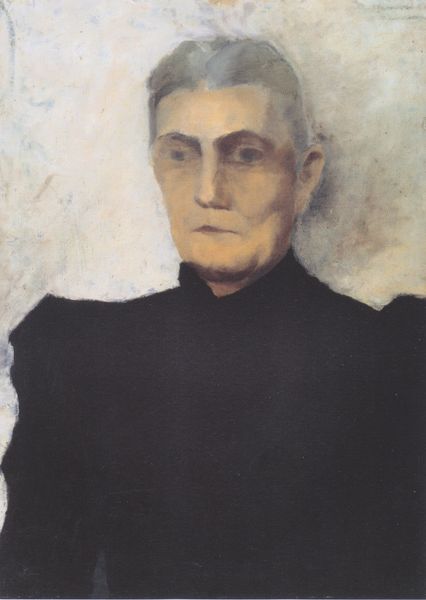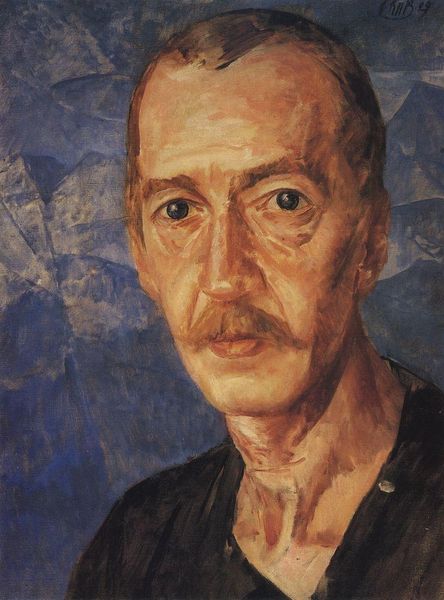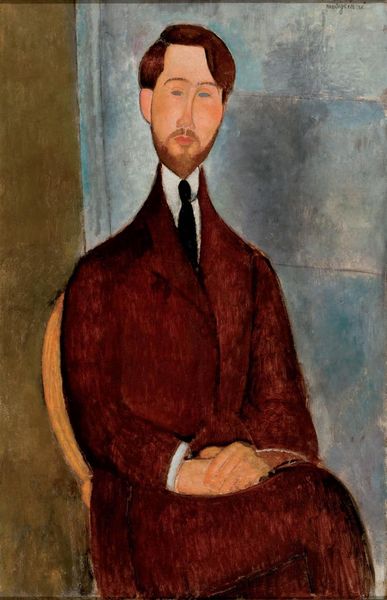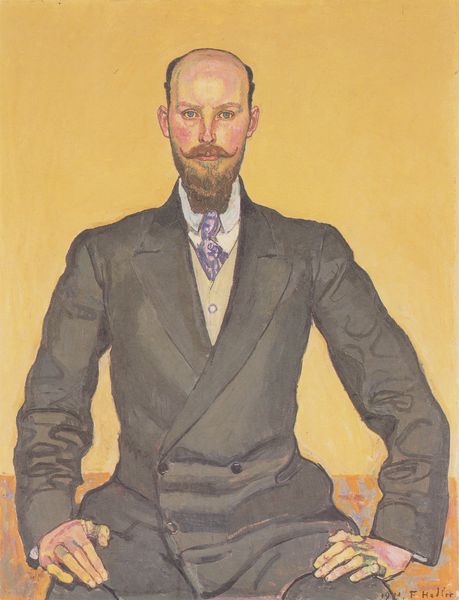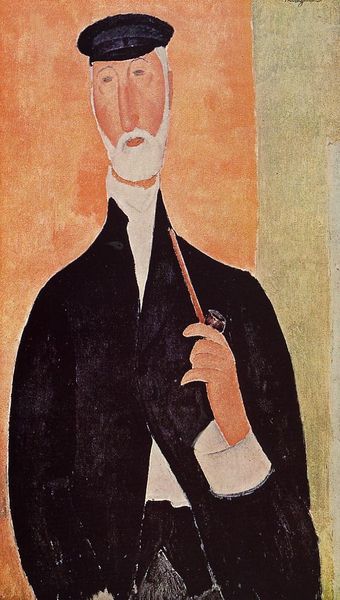
painting, oil-paint
#
portrait
#
painting
#
oil-paint
#
oil painting
#
intimism
#
modernism
Dimensions: 100 x 65 cm
Copyright: Public domain
Curator: This is Amedeo Modigliani’s "Sitting Man on Orange Background" from 1918, an oil painting now held in a private collection. Editor: My first thought? Somber elegance. The flattened planes, the slightly muted color palette... it projects a certain quiet dignity, almost melancholy. Curator: It's intriguing how Modigliani employs such direct, almost rudimentary brushstrokes. You can practically see the layering of the oil paint, the texture—a testament to the physicality of the artistic process. It grounds the subject. Editor: I agree about the texture. But I am drawn to the eyes, the way they seem to look past you, not at you. The elongated features are, of course, Modigliani's signature, but in this portrait, they enhance the sitter's enigmatic quality. There's a hint of sadness there, don't you think? Curator: I wonder about the provenance of the pigments he chose. This particular shade of orange, the way it interacts with the black of the suit—was there a material or economic consideration influencing that palette? The availability of certain dyes post WWI, perhaps? Editor: Undoubtedly material conditions affected artistic choices, but color always carries symbolic weight. The orange here could suggest warmth, even optimism, despite the overall somber tone. Think of it as a flicker of hope amidst the darkness. It reminds me of depictions of mortality. Curator: It’s a dialogue between materiality and representation. The visible brushwork reminds us of the labor, the physical act of creation. I almost see the market value in those visible marks and brush strokes that elevate this work. Editor: Indeed, and for me, the enduring appeal of this portrait lies in its emotional resonance. The subject remains a mystery, yet we are drawn to his inner world, invited to contemplate his story, through the symbols Modigliani carefully composed. Curator: Seeing this piece and speaking of it reveals, I believe, that art always operates within a complex web of production and interpretation. Editor: And that the artist’s vision always leaves something for us to unpack, and perhaps find a shared emotional landscape across time.
Comments
No comments
Be the first to comment and join the conversation on the ultimate creative platform.
